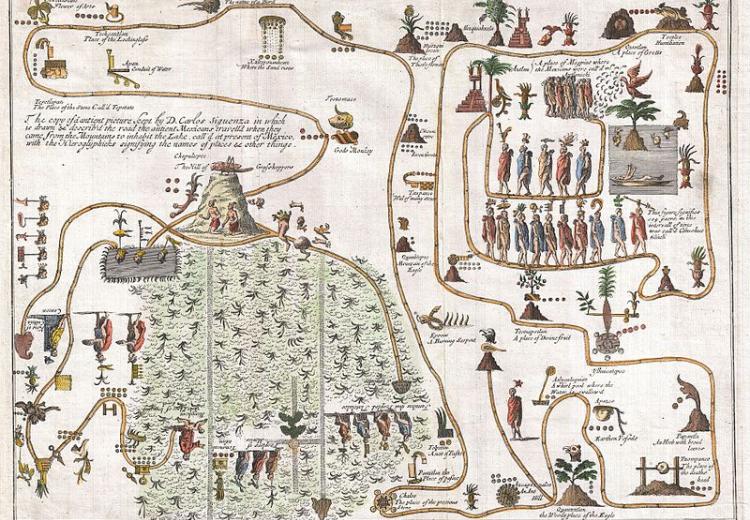The Aztecs: Mighty Warriors of Mexico

First published representation of the legendary Aztec migration from Aztlan in the northwest of Mexico, to Chapultepec Hill, currently Mexico City. Drawn by Giovanni Francesco Gemelli Careri, ca. 1704.
"All about us we saw cities and villages built in the water, their great towers and buildings of masonry rising out of it…When I beheld the scenes around me I thought within myself, this was the garden of the world."
—Bernal Díaz del Castillo, Spanish conquistador
When the Spanish conquistador Hernán de Cortés and his army arrived in Tenochtitlan (ten-ohch-teet-LAHN), capital of the mighty Aztec empire, they were amazed by what they saw. The island city was built in the middle of Lake Texcoco, connected to the surrounding land by three great causeways. Stone aqueducts delivered fresh water to the city residents. A network of canals made up the city streets, and farmers grew vegetables on ingeniously constructed “floating gardens” (chinampas). There were palaces, parks, ball courts, a zoo, a bustling market, and an awe-inspiring temple complex. Tenochtitlan was the hub of a rich civilization that dominated the region of modern-day Mexico at the time the Spanish forces arrived. In this lesson, students will learn about the history and culture of the Aztecs and discover why their civilization came to an abrupt end.
Guiding Questions
What made the Aztecs a great civilization?
How does the Aztec Empire live on in today's world?
Learning Objectives
Explain why the Aztecs became the builders of a great city and rich civilization in what is now Mexico.
Compare the accomplishments of the Aztec civilization with other ancient civilizations across world history.
Evaluate the extent to which Aztec history, innovation, and culture remain important to today's world.
